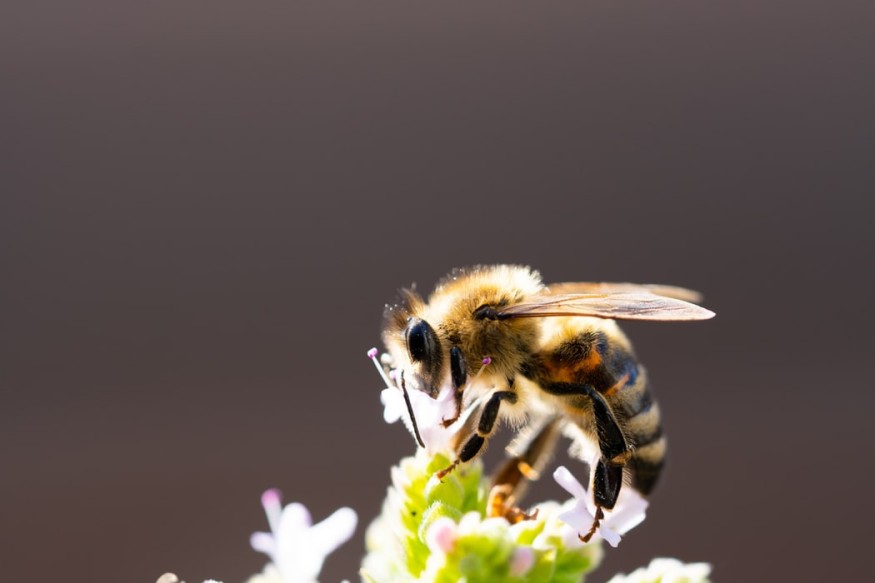
There has been a steady decline in the population of honey bees not only in the United States but all over the world. Scientists were able to pinpoint the use of pesticides as the primary factor in pushing these highly-beneficial insects to their extinction. In the past 20 years, the level of the insecticides applied to the agricultural landscapes of the United States alone has become significantly toxic when ingested by honey bees.
Christina Grozinger, distinguished professor, entomologist, and director of the Center for Pollinator Research at Pennsylvania State University and a team of entomologists who identified the rising neonicotinoid seed treatments and soy to be the primary driver of the extinction of honey bees in the US. According to Grozinger, the toxicity has increased in the same period of widespread decline in the population of honey bees and other insects. Although they recognize the importance of insecticides in minimizing damage to agricultural crops, they can highly affect other insect species such as the honey bees and other highly-beneficial pollinators.
"It is problematic that there is such a dramatic increase in the total insecticide toxicity at a time when there is also so much concern in the decline in populations of pollinators," she said. "These insects also play a very critical role in agricultural production." Maggie Douglas, an assistant professor of environmental studies at Dickinson College, a former postdoctoral fellow at Penn State, and the leader of the study integrated several public databases together with her team of researchers including the data of insecticide use from the United States Geological Survey, toxicity data from the Environmental Protection Agency, and data of crop acreage from the United States Department of Agriculture. With these data hand, the researchers were able to generate annual estimates of honey bee-toxic load on a county level for insecticides applied between 1997 and 2012.
The team defined toxic load as the number of lethal doses from all insecticides applied to crops in each country that are lethal to bees. They proceeded in generating separate estimates for contact-based and oral-based toxic loads (happens when a bee is sprayed directly with an insecticide or ingests pollen from the treated plant, respectively). With these estimates, the researchers predicted the toxic load at the county level and published their results in Scientific Reports. Their methodology produced results that show pounds of insecticide applied decreased in most counties between 1997 to 2012 while contact-based toxic load remained steady. Unfortunately, the oral-based toxic load increased by ninefold throughout the United States although the patterns differ by region.
The greatest increase in oral-based toxic load is 121-fold seen in Heartland -- the region that encompasses Iowa, Illinois, Indiana, most of Missouri, a part of Minnesota, Ohio, Kentucky, Nebraska, and South Dakota -- while the Northern Great Plains (North Dakota, Colorado, Wyoming, Montana, and Minnesota) hold the record of the second-highest increase at 53-fold. Douglas explains that this dramatic increase in oral-based toxic load is connected to the widespread use of neonicotinoid insecticides. The neonicotinoids are commonly used as seed coatings in crops such as corn and soybean and a percentage of the insecticide is taken up by the plant as it grows and is distributed throughout its tissues. Grozinger says that there are several studies that already showed the negative effects of these treatments on most crops in the region. "Unfortunately, growers often don't have the option to purchase seeds that do not have these treatments, meaning, they also don't have choices in how to manage their crops."
Researchers also pointed out that the common method of evaluating insecticide-use trends does not give an accurate picture of environmental impact. As a solution, Douglas and her team of entomologists suggested using their bee-toxic load which is an alternative indicator especially in cases where impacts in pollinators are a concern. "This is relevant given that a lot of states have adopted the Pollinator Protection Plans to be able to monitor and address declines in the population of pollinators," Douglas said. "Our work helps to identify geographic areas that are in need of in-depth risk assessment, insecticide mitigation, and conservation efforts."
Grozinger notes that the calculation provided by the bee-toxic load provides information about the total toxicity of insecticides that were applied to a landscape. However, it does not calculate how much of the applied insecticide came in contact with bees and thus future studies are encouraged.









